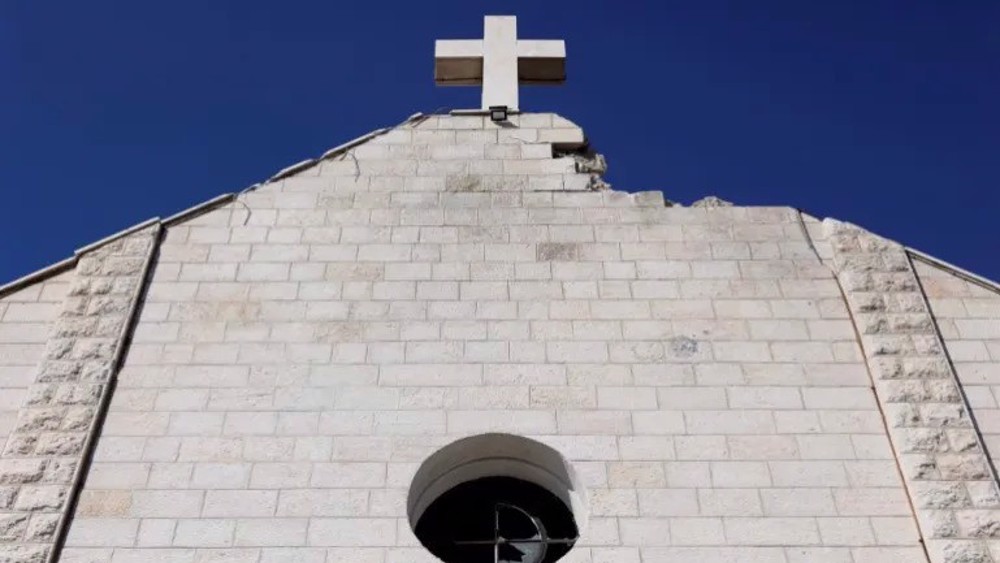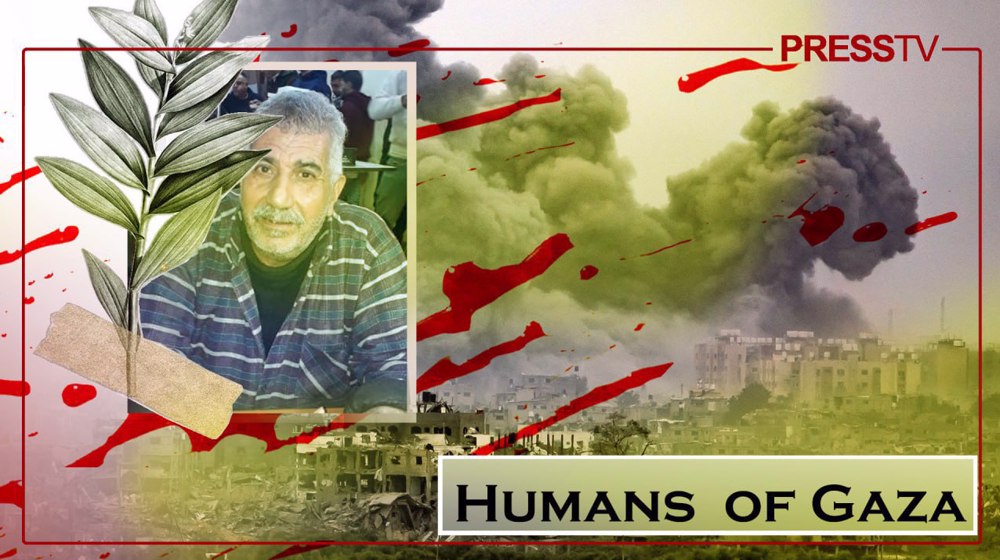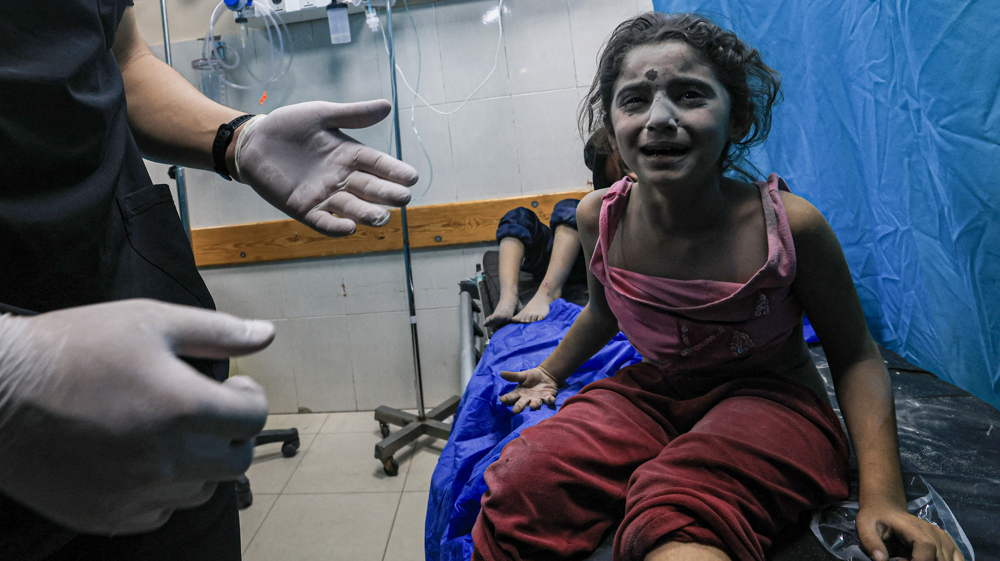Iraqi resistance to US: Stop sponsoring Gaza war or we’ll decimate your bases
By Ivan Kesic
Since the Israeli regime launched its indiscriminate bombing campaign on the blockaded Gaza Strip last month, the United States has not only failed to condemn it but has thrown its full weight behind the regime.
From amplifying the distorted narratives of the war to sending warships to the region, the Joe Biden administration has left no stone unturned in the past five weeks to support the genocidal attacks.
However, the build-up of US forces in the region and airstrikes and threats from top US officials have failed to deflect attention from the existential crisis facing the Tel Aviv regime.
Palestinian resistance as well as people in the besieged coastal strip have refused to back down, while other resistance groups in the region have also made it clear that they won’t be mute spectators.
In response to the Israeli aggression on Gaza, and the US support to the campaign, resistance groups in Iraq have struck several US occupation bases in the region in recent weeks.
The message is loud and clear – the liberation of Palestine begins with the closure of US military bases and the expulsion of US forces from the region - including Iraq, Syria and Yemen.
The regime will cease to exist in the absence of these bases.
First strikes on US bases
Making it amply clear that the mastermind of the ongoing carnage in the Gaza Strip is the United States, the first five shipments of American weapons arrived in the occupied territories on October 17.
On the same day, 2,000 US troops in the region were put on high alert, and the first full deployment of its newest Ford aircraft supercarrier was extended to the eastern Mediterranean.
According to US media reports, this was done to deter the regional resistance movements ahead of the Israeli ground aggression against Gaza that eventually turned out to be a disaster for the regime.
Nevertheless, the movements of the Axis of Resistance made it clear that they would not be intimidated by such moves, and the very next day, October 18, Americans were surprised by the first of many attacks.
The Iraqi Islamic Resistance launched a drone attack on al-Asad and al-Harir airbases in Iraq, and at the same time, the al-Tanf base in Syria was also attacked by drones.
Initial US reports claimed that the attack on al-Asad airbase had been repelled, one of the two drones had been intercepted and that material damage by the other was minor, as well as that some troops were being evaluated for possible traumatic brain injury.
A week later, on October 25, CENTCOM announced that four US soldiers had been injured and that one of their aircraft was damaged in Iraq. It also admitted that an additional 20 soldiers were injured in Syria.
One day after the first attack, on October 19, a false alarm in the al-Asad airbase caused a mass panic and a flight to the shelter, during which an American civilian contractor died from cardiac arrest.
Insecurity also spread among the US diplomatic staff, so on October 20 all non-emergency staff were ordered to leave their embassy in Baghdad and consulate in Erbil.
A series of attacks on US military installations followed over the next week, including the al-Tanf, Conoco, al-Omar, al-Rukban and al-Shadadi sites in Syria, as well as the Victoria and al-Asad sites in Iraq.
First US timid attack
In the early morning of October 26, the US military at President Joe Biden’s direction for the first time attacked the positions of the axis of resistance in eastern Syria.
The US strikes were carried out by an F-15 and a pair of F-16 fighter jets using precision-guided munitions, allegedly against two weapons and ammunition storage facility close to Abu Kamal, near the Syrian border with Iraq.
The military effect of the strike was insignificant, with no casualties or significant material damage, and the report of the US Department of Defense (DoD) was equally lukewarm.
In carefully chosen words, the DoD report described the attacks as "narrowly tailored strikes" and separated them from the aggression in Gaza, explaining that they did not represent a shift in approach to that conflict.
It further stated that the US does not seek conflict and has no intention nor desire to engage in further hostilities, as well as that Washington continues to urge all state and non-state entities not to take action that would escalate into a broader regional conflict.
Military strategists perceive the wording of the report as an admission of US inefficacy and acknowledgment of who they are facing on the battlefield – the resurgent Axis of Resistance.
Continued strikes on US bases
The Axis of Resistance was not intimidated by direct US military threats either, so the attacks on American occupation bases continued in the following days.
On October 28, the Islamic Resistance in Iraq targeted US forces at the al-Tanf base in Syria with two drones, followed by an attack on the al-Hasakah base in Syria with more drones the next day.
On October 30, the US base in al-Omar gas field in Syria was shelled from the Iraqi territory.
Later, it was reported that the al-Asad airbase in Iraq was targeted with a barrage of four rockets by the Islamic Resistance in Iraq.
The next day, the Iraqi Resistance targeted the al-Asad base in Iraq using two drones, and at the same time, US bases at the Conoco and al-Omar gas fields in Syria were also subjected to missile attacks.
On the first day of November, the Iraqi Islamic Resistance announced targeting the US occupation base in al-Tanf using two drones, confirming direct hits.
Three days later, they also claimed responsibility for targeting the al-Harir airbase, using two drones. Shortly after, they also targeted a US base in al-Shaddadi in northeastern Syria.
On November 5, the Iraqi Islamic Resistance claimed responsibility for the successful bombardment of the US occupation forces at the Tal Baidar base in al-Hasakah, also in northeastern Syria.
Blinken's visit to Iraq
US Secretary of State Antony Blinken visited Baghdad on November 5, reportedly carrying a message for Iran that Iraqi Prime Minister Mohamed Shia al-Sudani delivered the next day during his visit to Tehran.
Speaking to reporters after his meeting with Iraqi officials, Blinken paraphrased the earlier cautious DoD report that they would protect American citizens in Iraq and Syria, and stressed that his country is "not looking for conflict with Iran."
The series of attacks by the Iraqi resistance had come as a rude shock to the top American diplomat.
Blinken was received coldly in Baghdad, like a day later in Turkey. He was seen wearing a bulletproof vest surrounded by a group of security guards at a Baghdad airport.
Again, the Iraqi Islamic Resistance was not intimidated and Kata'ib Hezbollah, the anti-terror resistance group, announced that they considered Blinken's visit a provocation and would increase their attacks.
Latest strikes on US bases
Just one day after Blinken’s visit, two US-run bases in Iraq and two others in Syria came under two separate drone attacks, with the Iraqi Islamic Resistance claiming responsibility for them.
The Iraqi anti-terrorist group said the attacks were a response to Israeli atrocities in Gaza and to US threats, adding that they had used the Aqsa-1 medium-range missile for the first time.
On the same day, US officials announced that 45 of their soldiers had been injured in recent attacks and that their troops had been hit a total of 38 times since the start of the Israeli war on Gaza on October 7.
On November 8, the US military repeated an airstrike similar to the previous one, targeting a military site in eastern Syria, but with equally unsuccessful consequences.
The Iraqi Islamic Resistance the same evening targeted the Al Hasakah base, where US occupation troops and their allied militants are stationed, using two squadrons of drones in quick succession.
The designated targets were precisely struck and destroyed, according to the Iraqi group's statement, and the US declined to provide details on casualties and damage.
In the latest attack on November 10, two drones were launched at the al-Harir airbase in Iraq, with direct hits.
Messages from the resistance
The aim of all these attacks is not the complete destruction of US bases, but the continuous sowing of panic and anxiety, showing Americans that they have the determination and ability to strike at will.
Abu Alaa al-Walaei, secretary general of the Kata'ib Sayyid al-Shuhada resistance group, emphasized the retaliatory strikes by Iraqi resistance fighters on US occupation forces will continue unabated.
He underlined that the strikes on US military positions in Iraq will stop only when the Israeli strikes on Gaza end and humanitarian aid convoys reach locals in the besieged territory without any restrictions.
Earlier, US airstrikes were more frequent and more deadly, but the Iraqi resistance did not waver and fought back every time. The latest strikes show the Iraqi resistance has finally arrived.
US, Israel suffered another defeat in terrorist riots after June war: Qalibaf
Al-Quds churches warn ‘Christian Zionism’ threatens Christianity
New York City's chief financial officer to defy Mayor Mamdani by purchasing Israeli bonds
European leaders reject Trump’s ‘blackmail’ over Greenland tariffs
Iran warns Europe is sidelining itself by ‘blindly following’ US, Israel
VIDEO | Press TV's news headlines
Pentagon readies 1,500 soldiers to deploy for Minnesota protests crackdown
US evacuation of Ain al-Asad base bolsters Iraq’s national sovereignty: Iran FM

















 This makes it easy to access the Press TV website
This makes it easy to access the Press TV website